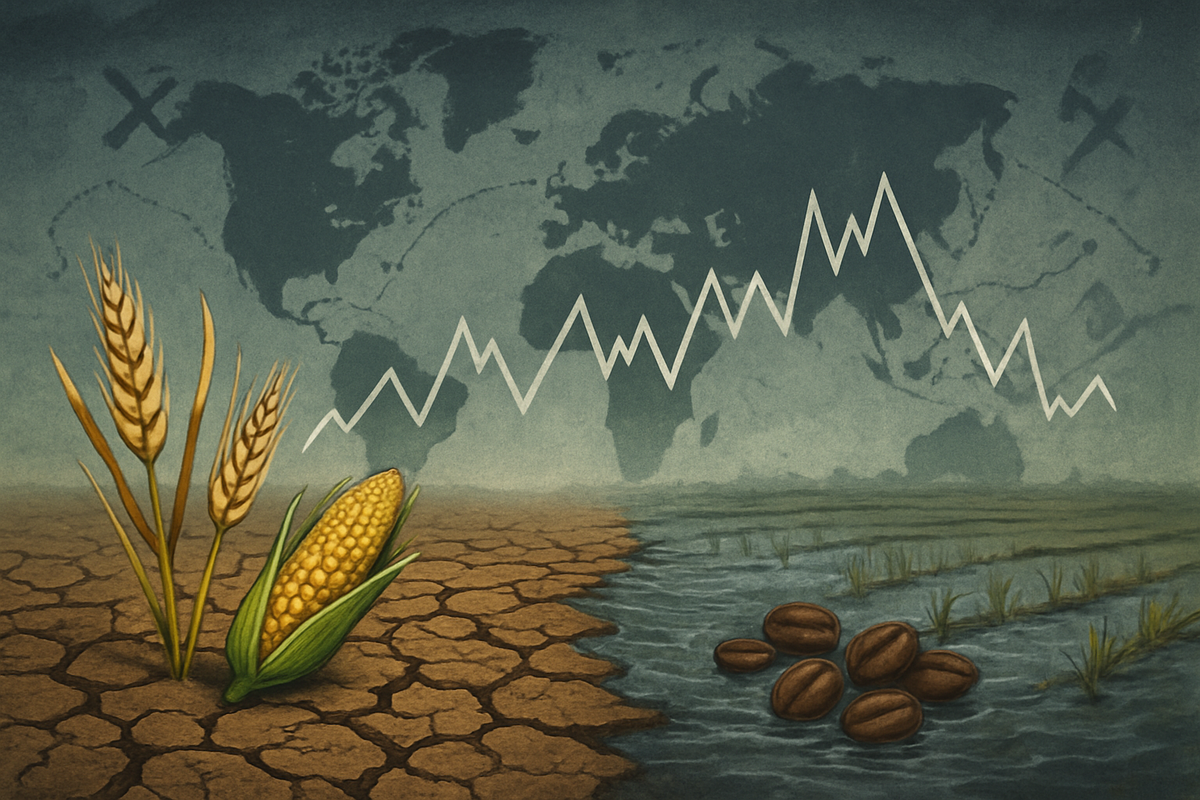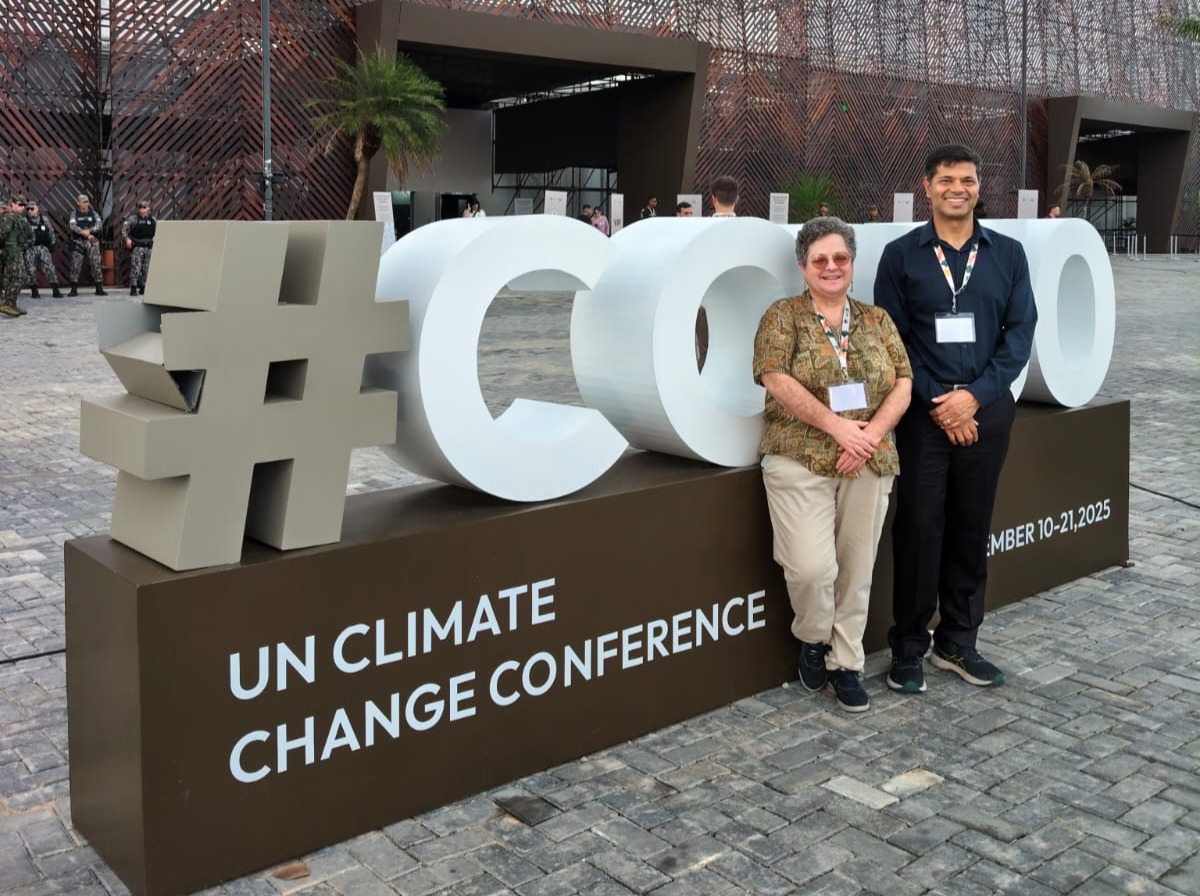Rapid Insect Decline Threatens Global Food Security and Yields – WebProNews

Report on Global Insect Population Decline and its Impact on Sustainable Development Goals
A significant decline in global insect populations poses a direct threat to the achievement of multiple Sustainable Development Goals (SDGs), particularly those related to food security, biodiversity, and economic stability. Reports indicate that insect populations have decreased by as much as 75% in certain regions, undermining the ecological services essential for human well-being and sustainable development.
Impact on Sustainable Development Goals (SDGs)
SDG 2: Zero Hunger
The decline in insect populations presents a critical challenge to global food security and the goal of achieving Zero Hunger. Insects are fundamental to agricultural productivity through several key functions:
- Pollination: An estimated 75% of the world’s leading food crops, including fruits, vegetables, and nuts, depend on insect pollination. A reduction in pollinators directly threatens crop yields and food availability.
- Nutrient Cycling: Insects play a vital role in soil health and nutrient recycling, which supports forage quality for livestock and contributes to sustainable farming systems.
- Pest Control: Predatory insects help control crop-damaging pests, reducing the need for chemical inputs. Their decline can lead to increased pest outbreaks and greater reliance on pesticides, creating a negative feedback loop.
The Food and Agriculture Organization (FAO) projects a 70% rise in food demand by 2050, making the loss of these ecosystem services a severe risk to global food supply chains.
SDG 15: Life on Land
The collapse of insect populations is a clear indicator of widespread biodiversity loss and ecosystem degradation, directly impacting SDG 15. Insects form the base of numerous terrestrial and freshwater food webs, supporting birds, fish, and mammals. Their disappearance disrupts these ecosystems and threatens the survival of other species. The crisis is symptomatic of broader environmental pressures that degrade habitats and reduce biodiversity.
SDG 1 (No Poverty) & SDG 8 (Decent Work and Economic Growth)
The economic consequences of insect decline are substantial and threaten progress towards poverty reduction and sustainable economic growth. Key economic impacts include:
- Agricultural Losses: The loss of pollinators like bees could cost the global economy billions of dollars annually in reduced agricultural productivity. For example, the U.S. almond industry, which is heavily reliant on honeybees, faces significant production risks.
- Increased Food Prices: Reduced crop yields are projected to cause food prices to soar by 20-30%, disproportionately affecting low-income nations and vulnerable populations, thereby exacerbating poverty (SDG 1).
- Threats to Livelihoods: The stability of the agribusiness sector and the livelihoods of millions of farmers are at risk, undermining decent work and economic growth (SDG 8).
Analysis of Causal Factors Undermining Sustainable Development
SDG 12: Responsible Consumption and Production
The primary drivers of insect decline are linked to unsustainable production patterns that are in direct conflict with SDG 12.
- Intensive Agriculture: The prevalence of monoculture farming reduces habitat diversity, while the widespread use of neonicotinoid pesticides is lethal to both pest and beneficial insect species.
- Chemical Overuse: Increased reliance on broad-spectrum pesticides to manage pests in the absence of natural predators worsens the decline of beneficial insects.
SDG 13 (Climate Action) & SDG 11 (Sustainable Cities and Communities)
Environmental and climatic factors further compound the crisis:
- Climate Change: Rising global temperatures alter insect migration patterns, breeding cycles, and food availability, contributing to population instability and threatening climate action goals (SDG 13).
- Urbanization and Pollution: The expansion of urban areas leads to habitat fragmentation, while light pollution disorients nocturnal insect species, increasing mortality rates and undermining the goal of sustainable cities (SDG 11).
Strategic Interventions to Advance the SDGs
Promoting Sustainable Agriculture (SDG 2 & SDG 12)
Reversing the decline requires a transition to sustainable agricultural practices that support both food production and biodiversity.
- Insect-Friendly Farming: Implementing practices such as planting wildflower strips along field edges to provide habitats and food sources for pollinators.
- Integrated Pest Management (IPM): Adopting strategies that blend biological controls with minimal and targeted chemical use to protect beneficial insects.
- Biotechnology: Developing genetically modified crops that are pest-resistant, reducing the overall need for chemical insecticides.
Policy and Conservation Efforts (SDG 15 & SDG 17)
Effective policy and international cooperation are essential for protecting insect populations and achieving related SDGs.
- International Biodiversity Frameworks: Supporting initiatives like the UN’s goal to protect 30% of global land by 2030, which would safeguard critical insect habitats.
- Regulatory Action: Enacting and enforcing stricter regulations on the use of harmful pesticides.
- Financial Incentives: Utilizing agricultural subsidies, such as the U.S. Farm Bill, to fund pollinator protection programs and encourage sustainable practices.
Future Outlook and Recommendations
Addressing the global decline in insect populations is imperative for securing a sustainable future. A paradigm shift is needed to integrate biodiversity conservation (SDG 15) with agricultural production (SDG 2). Emerging trends, such as the farming of edible insects for sustainable protein, offer potential solutions but require overcoming cultural and regulatory barriers.
Key Recommendations:
- Integrate pollinator and biodiversity protection into national and international agricultural and environmental policies.
- Accelerate the transition towards sustainable and regenerative farming systems in line with SDG 12.
- Increase investment in research, technology, and real-time monitoring of insect populations to guide precision agriculture and conservation efforts.
- Strengthen international collaboration (SDG 17) to address the root causes of decline, including climate change, habitat loss, and the spread of invasive species.
Analysis of Sustainable Development Goals in the Article
1. Which SDGs are addressed or connected to the issues highlighted in the article?
The article on the decline of insect populations and its impact on the food system addresses several interconnected Sustainable Development Goals (SDGs). The primary SDGs highlighted are:
- SDG 2: Zero Hunger: The core of the article focuses on the threat to global food security, crop yields, and pollination, which directly relates to ending hunger and ensuring sustainable food production.
- SDG 15: Life on Land: The phenomenon described as the “insect apocalypse” is a direct issue of biodiversity loss, ecosystem collapse, and the degradation of terrestrial habitats, which is the central focus of this goal.
- SDG 12: Responsible Consumption and Production: The article identifies intensive agriculture, particularly the overuse of chemical pesticides, as a primary driver of insect decline, linking the issue to patterns of production and the need for environmentally sound management of chemicals.
- SDG 13: Climate Action: Climate change is mentioned as a compounding factor that exacerbates insect decline by altering their migration and breeding patterns, connecting the issue to the broader need for climate action.
- SDG 11: Sustainable Cities and Communities: The article points to urbanization, sprawling suburbs, and light pollution as contributors to habitat fragmentation and insect mortality, linking the problem to how cities and human settlements are planned and managed.
2. What specific targets under those SDGs can be identified based on the article’s content?
Based on the issues and solutions discussed, the following specific SDG targets can be identified:
-
SDG 2: Zero Hunger
- Target 2.1: By 2030, end hunger and ensure access by all people, in particular the poor and people in vulnerable situations, including infants, to safe, nutritious and sufficient food all year round. The article directly connects to this by warning that declining pollination could lead to food shortages and that “hunger could affect an additional 9.8% of the global population.”
- Target 2.4: By 2030, ensure sustainable food production systems and implement resilient agricultural practices that increase productivity and production, that help maintain ecosystems, that strengthen capacity for adaptation to climate change… and that progressively improve land and soil quality. The article discusses this target by criticizing current “intensive agriculture” and promoting solutions like “insect-friendly farming,” integrated pest management (IPM), and planting wildflower strips.
-
SDG 15: Life on Land
- Target 15.5: Take urgent and significant action to reduce the degradation of natural habitats, halt the loss of biodiversity and, by 2020, protect and prevent the extinction of threatened species. The article’s central theme of an “insect apocalypse,” with populations having “plummeted by as much as 75% in some regions” and “extinction risks to 40% of insect species,” directly addresses this target.
- Target 15.9: By 2020, integrate ecosystem and biodiversity values into national and local planning, development processes, poverty reduction strategies and accounts. The article supports this by calling for a “paradigm shift” in agriculture to prioritize biodiversity and referencing policy actions like EU subsidies for conservation and the need to fund pollinator protections in the U.S. Farm Bill.
-
SDG 12: Responsible Consumption and Production
- Target 12.4: By 2020, achieve the environmentally sound management of chemicals and all wastes throughout their life cycle…and significantly reduce their release to air, water and soil in order to minimize their adverse impacts on human health and the environment. The article highlights this target by identifying “neonicotinoid pesticides” and “chemical overuse” as lethal to beneficial insects and advocating for a shift to “targeted biologics” and IPM.
3. Are there any indicators mentioned or implied in the article that can be used to measure progress towards the identified targets?
Yes, the article mentions several quantitative and qualitative indicators that can be used to measure the problem and the progress towards solutions:
-
Indicators for SDG 2 (Zero Hunger)
- Percentage of the population affected by hunger: The projection that “hunger could affect an additional 9.8% of the global population” serves as a direct indicator of the potential impact on food security.
- Crop yields and productivity: The article states that insects pollinate “75% of the world’s leading food crops” and that a bee die-off could “slash [almond] production by 50%.” Monitoring these yields would be a key indicator.
- Adoption rate of sustainable agricultural practices: The mention of farmers in India “cutting pesticide use by half” through IPM is a measurable indicator of progress towards Target 2.4.
-
Indicators for SDG 15 (Life on Land)
- Rate of biodiversity loss: The statistic that “insect populations have plummeted by as much as 75% in some regions” is a baseline indicator of biodiversity loss. Tracking this rate over time would measure progress.
- Species extinction risk: The warning of “extinction risks to 40% of insect species” is an indicator related to the Red List Index. Monitoring this percentage would be crucial.
- Increase in local insect populations due to interventions: The article provides a positive indicator by noting that planting wildflower strips led to “up to 30% boosts in local insect populations.”
- Proportion of land protected for biodiversity: The mention of the UN’s goal to “protect 30% of global land by 2030” is a high-level policy indicator.
-
Indicators for SDG 12 (Responsible Consumption and Production)
- Reduction in pesticide use: The example of Indian farmers “cutting pesticide use by half” is a direct indicator of reduced chemical inputs in agriculture.
- Market shift to sustainable products: The mention of agribusiness giants “pivoting to sustainable products” implies that tracking the sales and development of these alternatives could serve as an indicator.
4. Summary Table of SDGs, Targets, and Indicators
| SDGs | Targets | Indicators |
|---|---|---|
| SDG 2: Zero Hunger |
2.1: End hunger and ensure access to food.
2.4: Ensure sustainable food production systems and resilient agricultural practices. |
– Projection of an additional 9.8% of the global population facing hunger. – Percentage of global food crops (75%) reliant on insect pollination. – Reduction in pesticide use (e.g., by half in India). – Boost in local insect populations (30%) from wildflower strips. |
| SDG 15: Life on Land |
15.5: Halt biodiversity loss and prevent the extinction of threatened species.
15.9: Integrate biodiversity values into national and local planning. |
– Rate of decline in insect populations (up to 75% in some regions). – Percentage of insect species at risk of extinction (40%). – Proportion of global land protected for biodiversity (target of 30% by 2030). |
| SDG 12: Responsible Consumption and Production | 12.4: Achieve environmentally sound management of chemicals and reduce their release into the environment. |
– Reduction in the volume of harmful pesticides used (e.g., neonicotinoids). – Adoption rate of Integrated Pest Management (IPM) by farmers. |
| SDG 13: Climate Action | 13.2: Integrate climate change measures into national policies, strategies and planning. | – (Implied) Monitoring of altered insect migration patterns and breeding cycles as a result of rising temperatures. |
| SDG 11: Sustainable Cities and Communities | 11.7: Provide universal access to safe, inclusive and accessible, green and public spaces. | – (Implied) Increase in urban green spaces that use native plants to support local insect populations. |
Source: webpronews.com
What is Your Reaction?
 Like
0
Like
0
 Dislike
0
Dislike
0
 Love
0
Love
0
 Funny
0
Funny
0
 Angry
0
Angry
0
 Sad
0
Sad
0
 Wow
0
Wow
0




















































.jpg.webp?itok=0ZsAnae9#)



























